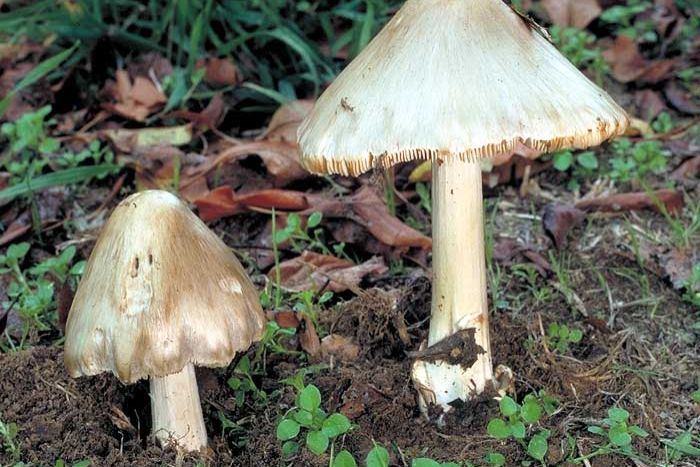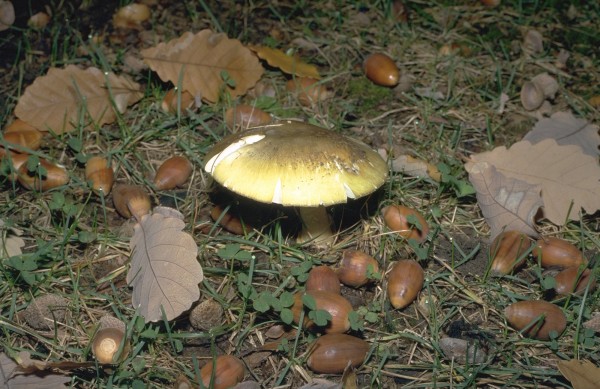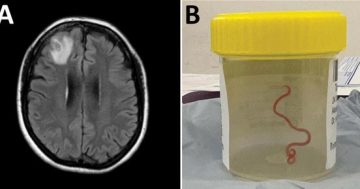
A half-open death cap mushroom (left) beside a Volvariella speciosa (right) is similar to a straw mushroom growing in Canberra. Photo: Heino Lepp.
ACT Health has urged people in the region not to touch, pick, or eat wild mushrooms after the fatal death cap mushroom has spawned following ideal growing conditions in Canberra.
In Canberra, this usually occurs in autumn, but there is no specific mushroom season given the mild conditions in the Territory.
ACT Chief Health Officer Dr Kerryn Coleman said the number of death cap mushrooms was expected to increase as we progress into autumn.
“We had an early growing season this year due to mild summer temperatures, but autumn is usually the peak growing period,” Dr Coleman said.
“All parts of the death cap mushroom are poisonous, whether they have been cooked or not.”
Dr Coleman warned the community not to touch wild mushrooms with bare hands and to keep children and animals away from them.
“If you think you may have eaten a death cap mushroom, seek urgent medical attention at a hospital emergency department even if there are no symptoms. If possible, take any remaining mushrooms to the hospital for identification,” Dr Coleman said.

A mature death cap mushroom. Photo: The Food Safety Information Council.
Death cap mushrooms are known to grow in areas across the ACT, often near established oak trees, although they can also be found where no oak trees are evident.
Death caps are easily mistaken for edible mushrooms, such as the straw mushroom, and there have been multiple incidents and fatalities associated with death cap mushrooms.
The first symptoms are stomach pains, vomiting and diarrhoea, which may continue for a day or two, after which there is typically an easing of symptoms and apparent recovery.
The ‘recovery’ period may last for two or three days before the terminal phase of three to five days, starting with the re-occurrence of stomach pains, vomiting and diarrhoea, accompanied by jaundice.
Without effective, early medical intervention, coma and death occur between one and two weeks after eating the mushroom. Death is caused by liver failure, often accompanied by kidney failure.
Fungi expert at the Australian National Botanic Gardens Heino Lepp said the death cap mushroom always has a slight ammonia-like smell. However, it may be quite strong, like household ammonia.
Anyone who might have eaten death cap mushrooms should seek urgent medical attention at a hospital emergency department as early medical intervention will help the chances of survival.
For further information or to report the location of death cap mushrooms, contact Access Canberra on 13 22 81. More information about death cap mushrooms is available from ACT Health.
Original Article published by Michael Weaver on The RiotACT.





